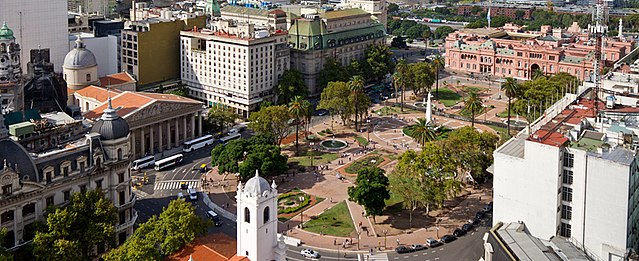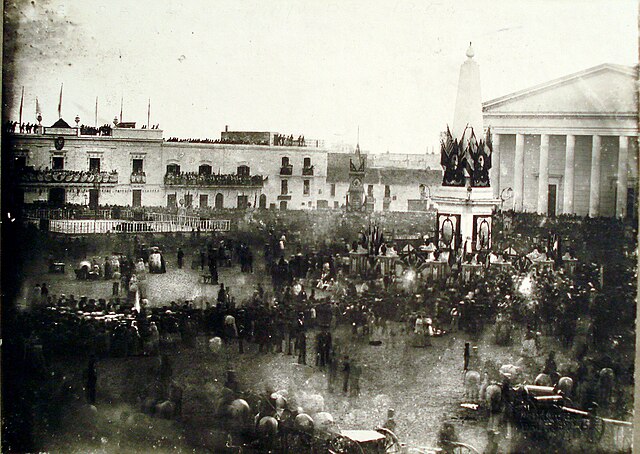Argentina has a vast territory and a variety of climates and microclimates ranging from tundra and polar in the south to the tropical climate in the north, through a vast expanse of temperate climate. Natural wonders include the Aconcagua, the highest mountain in the world outside the Himalayas, the widest river and estuary of the planet, the Iguazú Falls, the Humid Pampas, and the Argentine Sea. Visitors enjoy the culture, customs and Argentine cuisine.
Buenos Aires, La Reina del Plata
Church of San Francisco in Salta, with the highest church bell of South America
The Perito Moreno Glacier in summer, located in the World Heritage Los Glaciares National Park
The city of Ushuaia in summer, in the Province of Tierra del Fuego, Antarctica and South Atlantic Islands
The Plaza de Mayo is a city square and the main foundational site of Buenos Aires, Argentina. It was formed in 1884 after the demolition of the Recova building, unifying the city's Plaza Mayor and Plaza de Armas, by that time known as Plaza de la Victoria and Plaza 25 de Mayo, respectively. The city centre of Buenos Aires, Plaza de Mayo has been the scene of the most momentous events in Argentine history, as well as the largest popular demonstrations in the country. On the occasion of the first anniversary of the May Revolution in 1811, the Pirámide de Mayo was inaugurated in the square's hub, becoming Buenos Aires' first national monument.
Plaza de Mayo
Oath of the Constitution of Buenos Aires, 1854.
The old colonnade, 1864.
The Cathedral and May Pyramid, c. 1880.








